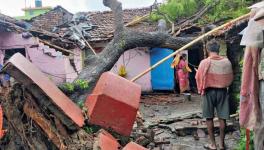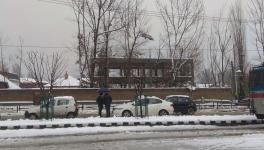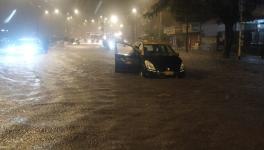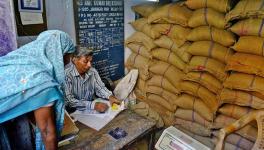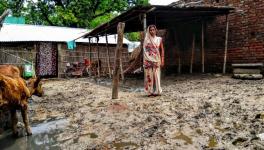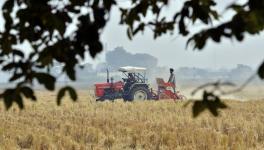Farmers in Distress as Rains Cause Heavy Crop Damage in North-West India
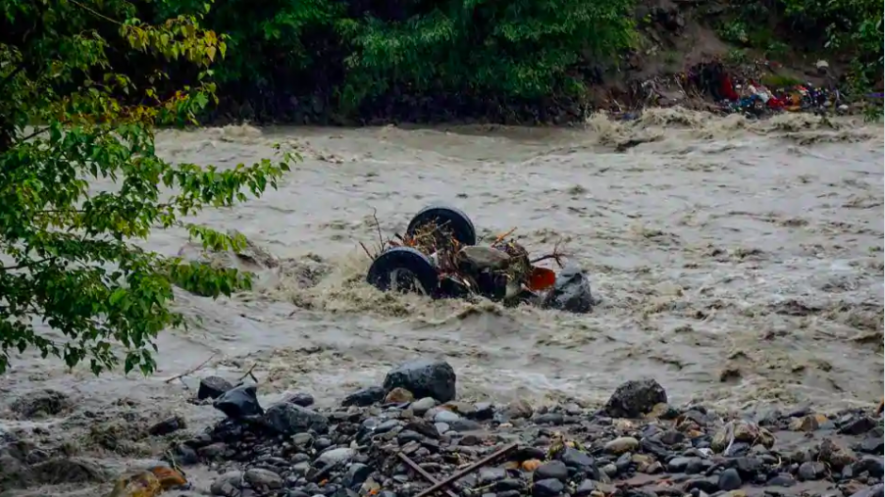
Four days of unexpected and torrential rains in the north-western states of Punjab, Haryana, Himachal Pradesh and Jammu & Kashmir have potentially left up to 30% of standing paddy crops flattened, according to preliminary reports. The rain showed signs of easing on September 25, and the Met Department predicted a retreat of the clouds.
Earlier estimates had predicted a bumper harvest of paddy this year based on sowing data. But this last round of rains has dashed farmers’ hopes.
Punjab and Haryana account for the lion’s share of paddy procured by the government for distribution through the public distribution system (PDS) across the country. Last year, of the 470.8 lakh tonnes procured by the Food Corporation of India (FCI), 176.6 lakh tonnes was sourced from Punjab and 59.2 lakh tonnes from Haryana.
Extensive crop damage will provide a test for the Modi government’s much hyped Pradhan Mantri Fasal Bima Yojana (PMFBY), which provides insurance for such events. Enrollment in the scheme has dipped from 57.3 million in 2016-17 to 48.5 million in 2017-18 due to delayed payments, less than desired compensation, Aadhaar-related glitches and other issues. The Punjab government has refused to implement the Centralgovernment’s scheme arguing that it will create its own crop insurance system. After the recent rains, the Punjab government has ordered a giradwari (crop damage assessment) survey.
Crop losses in this agricultural season are expected to heighten already simmering farmers’ unrest and anger over low sale prices and consequent losses in agriculture. Farmers are particularly miffed at the Modi government for not implementing the Farmers’ Commission recommendation of total cost+50% formula for minimum support prices. Instead, the government has announced a truncated cost estimate which it has been passing off as full cost.
Heavy rains accompanied by strong winds have lashed the whole region spurred by a rare combination of a Western disturbance with the winds pushed over central India by Cyclone Daye which hit Odisha coast earlier last week. The retreating South-West monsoon got a new kick of life because of this, causing widespread rain after a relatively dry earlier part of September.
According to reports from some districts in Haryana and Punjab, early transplanted rice varieties were ready for harvest when the rain struck causing the grain laden top heavy plants to keel over. Since many of these sowings are in low lying areas, accumulated water in the fields is not easily drained. This causes the grains to absorb moisture and get discoloured. In Punjab, water logging has affected paddy crop mainly in the districts of Patiala, Moga, Tarn Tarn, Amritsar and Ludhiana.
Farmers in both states extensively use combine harvesters for harvesting the paddy crops. However, fallen plants cannot be harvested by these machines. Only traditional manual harvesting can retrieve some crops – but that is time- consuming.
Farmers organisations like the Bharatiya Kisan Union and the All India Kisan Sabha have already demanded 100% compensation for crop losses in the affected districts, while government officials have reported receiving hundreds of complaints of crop damage and compensation under PMFBY – the new crop damage compensation scheme – in Haryana.
Crops were also damaged in the Western Uttar Pradesh districts of Baghpat, Meerut, Muzaffarnagar, and Mathura, according to reports. There was some damage to soyabean and pulses crops in Madhya Pradesh, too, although reappearance of bright sunshine after three days has relieved the farmers considerably.
Cotton farmers in Haryana have also been badly affected by the rains with an estimated 40% of crop destroyed. Bajra, moong and gwar crops were the worst affected with more than 50% loss due to rains in the state, said reports.
In Himachal Pradesh, the remote Lahaul valley witnessed unprecedented snowfall destroying potato, peas, other vegetables and apple crops causing heartbreak for farmers.
“There was no trace of potatoes, peas and vegetable crops in the fields which were buried under three or four feet of snow, even as harvesting was to start this month end,” said Himal Thakur, a farmer from Sissu, Lahaul, quoted by The Tribune.
Get the latest reports & analysis with people's perspective on Protests, movements & deep analytical videos, discussions of the current affairs in your Telegram app. Subscribe to NewsClick's Telegram channel & get Real-Time updates on stories, as they get published on our website.











